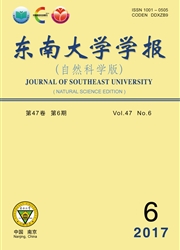

 中文摘要:
中文摘要:
为减少脑机接口的电极数量,采用基于最优化少量电极的共空间模式(CSP)算法提取不同思维任务下的脑电信号(EEG)特征值.首先,根据事件相关(去)同步化现象观察时频特性;然后,运用熵准则对单个电极进行可分性度量;最后,根据可分性排序,利用基于最优化少量电极的CSP算法和支持向量机算法对不同电极组合的特征值进行提取和分类,得出最优化的电极组合.结果表明,进行心算和想像空间旋转2种思维任务时被试的EEG信号在顶叶和枕叶区域存在明显的能量差异,6个被试可分性最高的电极均位于这2个区域;与传统的EEG信号处理算法相比,基于最优化少量电极的算法可以使系统使用的电极数减少至3.3个,并且分类正确率提高5.4%.因此,采用基于最优化少量电极的算法可以减少电极数目,改善思维任务脑机接口的性能.
 英文摘要:
英文摘要:
To decrease the number of channels of brain-computer interfaces,the optimal-less channel based common spatial pattern( CSP) algorithm is proposed to extract the eigenvalues of the electroencephalography( EEG) features of different mental tasks. First,the temporal-frequency features are represented by event-related( de) synchronization. Then,the separability of each individual channel is measured by entropy criterion. Finally,according to the rank of the separability,the eigenvalues of different channel groups are extracted and classified by the optimal-less channel CSP algorithm and the support vector machine algorithm to obtain the optimal channels. The results demonstrate that during the mental arithmetic task and the spatial rotation task,the EEG signals exhibit significant different powers in central and occipital lobe. The electrodes with the highest separability of all the subjects are located in these two areas. Compared with the traditional signal processing algorithm of EEG,the optimal-less channels based algorithm can reduce the number of the channels to3. 3 and increase the classification accuracy by 5. 4%. Therefore,the optimal-less channel based algorithm can reduce the number of channels and improve the performance of the mental task braincomputer interfaces.
 同期刊论文项目
同期刊论文项目
 同项目期刊论文
同项目期刊论文
 期刊信息
期刊信息
